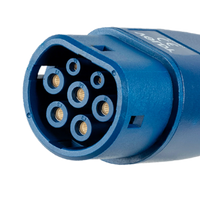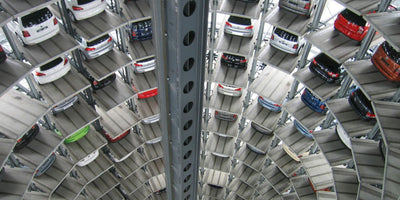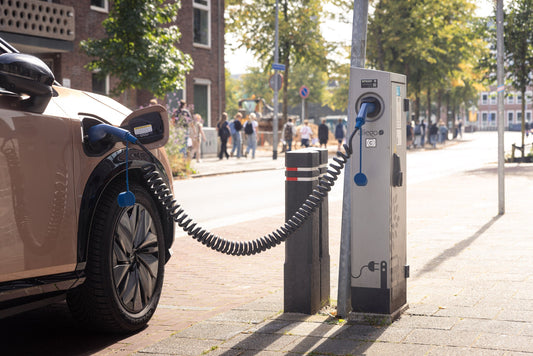What Type 1 and Type 2 connectors are
Type 1 and Type 2 charging cables utilize the two most common AC charging connectors for electric vehicles in Europe. They were developed for different regional electrical systems and use different pin layouts. Type 1 was created for the North American market, where households are supplied with single phase power only. Because the residential grid in the United States does not deliver three phase power, Type 1 was designed as a single phase connector. Outside the US, Type 1 is mainly found in Japan and Taiwan, where similar grid setups are used.
Type 2 was developed for Europe and supports both single phase and three phase power. European homes and public charging stations often use three phase electricity, which allows higher charging capacities. For this reason, the European Union selected Type 2 as the official AC charging standard for public charging stations.
Connector design and charging performance
A Type 1 connector uses a 5 pin layout and supports only single phase charging up to 7.4 kW. This makes it suitable for older EVs and plug in hybrids that do not require high AC charging speeds. Type 1 follows the SAE J1772 standard and is built around the limitations of single phase residential power in the United States.
A Type 2 connector uses a 7 pin layout that supports both single phase and three phase power. Public AC charging stations in Europe typically provide up to 22 kW through three phase power, which Type 2 fully supports. This difference in phase support is one of the key reasons Europe adopted Type 2. The connector design is based on the EN 62196 standard and includes the ability to carry higher AC loads safely.
Vehicle compatibility and usage years
Type 1 connectors are now uncommon in Europe and mainly appear on older EVs. Typical examples include the Nissan Leaf produced from 2010 to 2017, the Mitsubishi Outlander PHEV up to 2018, and early Kia and Hyundai plug in models from the early 2010s. These vehicles were originally launched with Type 1 to match markets outside Europe.
Type 2 became the dominant connector in Europe starting in 2014. From 2014 onward, nearly all electric vehicles sold in Europe were equipped with Type 2 as standard. This aligns with the Type 2 sockets used at every public AC charging station across the EU and matches European three phase electrical infrastructure.
Fig. 1 - View of a Type 1 EV charger.
Fig. 2 - View of a Type 2 EV charger.
Safety and locking mechanisms
Type 1 and Type 2 also differ in how they secure the connector during charging. Type 1 uses a manual locking clip that keeps the plug in place, but it does not lock automatically into the vehicle. Type 2 includes an automatic locking mechanism on the vehicle side. Once charging begins, the cable cannot be removed until the vehicle unlocks it. This provides improved safety and prevents accidental cable removal or theft. The built in locking feature is a key factor in the EU decision to adopt Type 2 for public AC charging.
Why Type 2 is the standard in Europe
Type 2 has become the universal AC connector in Europe because it supports higher charging speeds, integrates automatic safety locking, and matches the three phase electrical grid used in most European homes and public chargers. Type 1 remains functional for vehicles that use it, but it is no longer widely supported in the European market. For drivers who own a Type 1 vehicle, adapters and replacement cables are still available, although public chargers always provide Type 2 sockets.









